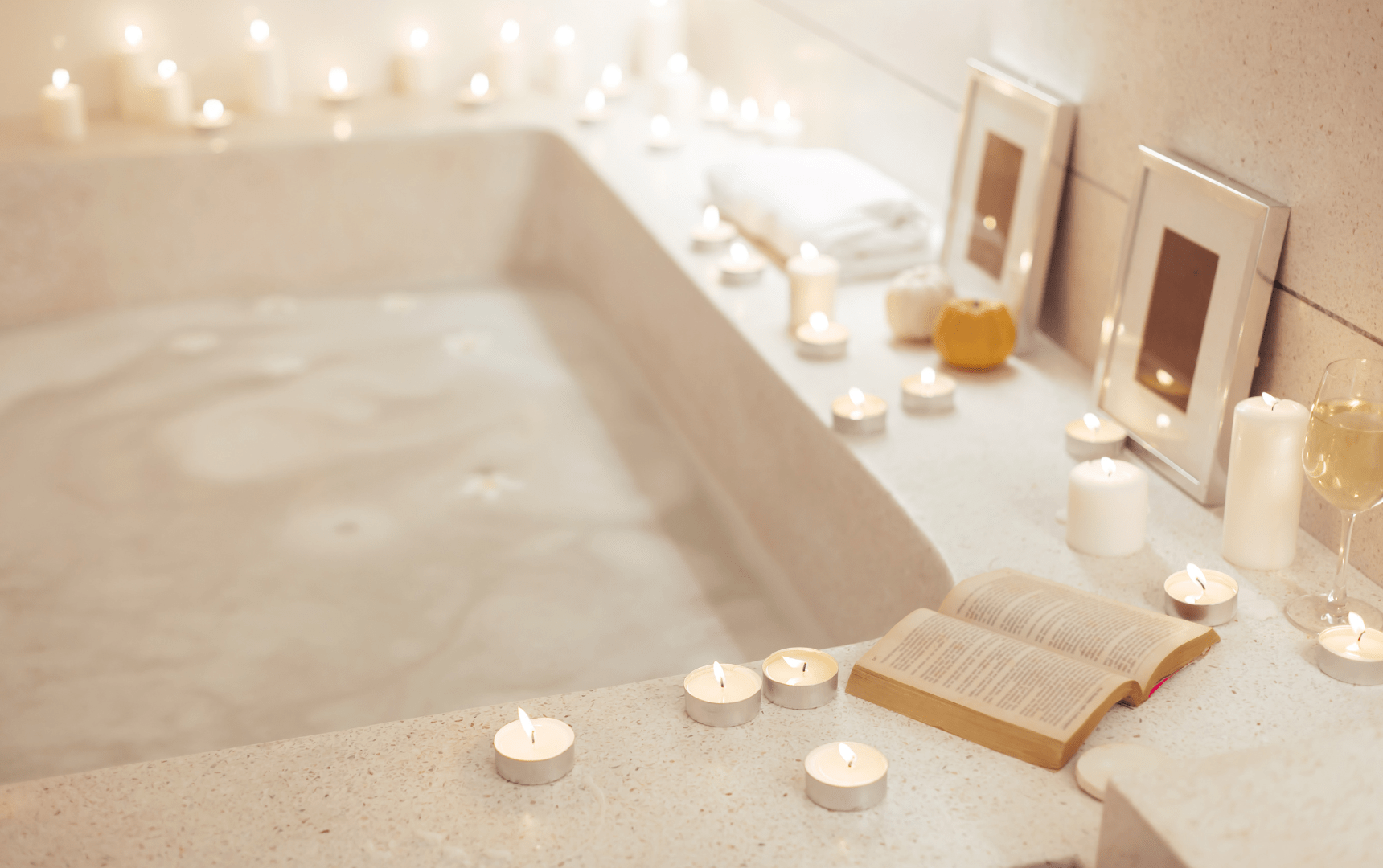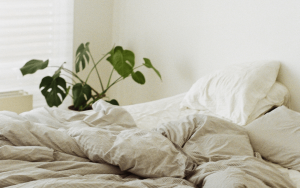Nighttime rituals are practices or activities you do regularly before going to sleep to help you relax, prepare for rest, and promote restful sleep. These rituals can vary widely depending on your personal preferences and what works best for you, but they generally involve activities that calm the mind and body.
Below we offer you 3 nightly rituals for a night of rest and renewal.
1. Night ritual through writing
The first ritual consists of the following steps:
- Facial Massage: Use a few drops of facial oil or moisturizer and gently massage your face. Pay special attention to areas where you feel tension, such as your forehead, temples, and jaw. Use gentle, circular motions to relax your facial muscles and release any built-up tension.
- Turn off electronic devices: Half an hour before bed, turn off all electronic devices, such as smartphones, tablets and computers. The blue light emitted by these devices can interfere with the production of melatonin, the sleep hormone, making it difficult to fall asleep.
- Gratitude Writing: Before you go to bed, grab a notebook or journal and write down three things you’re grateful for that day. They can be big or small, from something as simple as enjoying a warm cup of tea to a meaningful moment you shared with a loved one. Practicing gratitude can help you cultivate a positive attitude and promote more restful sleep. If something is weighing you down or making you uneasy, make a list of everything that’s making you nervous. Writing it down relieves a little of the weight that’s weighing you down.
- Nighttime skincare routine: Complete your nighttime ritual with a relaxing skincare routine. Use gentle, nourishing products to cleanse and moisturize your skin, and take your time to enjoy each step. Gently massage your skin as you apply your products, enjoying the soothing, comforting feel.
2. Nightly visualization and relaxation ritual
The following ritual consists of:
- Setting the mood: Before you begin your ritual, make sure your bedroom is clean, tidy and conducive to rest. Turn off bright lights and light a few candles or use dim lighting to create a relaxing atmosphere.
- Relaxing Herbal Tea: Brew a cup of relaxing herbal tea, such as chamomile or linden. Choose a gentle, caffeine-free infusion that will help you relax and prepare for sleep. Sip your tea slowly, savoring each sip and allowing its aroma and flavor to calm you.
- Guided visualization: Sit or lie down in a comfortable position and close your eyes. Imagine a quiet, peaceful place, such as a deserted beach or a tranquil garden. Visualize every detail of this place, from the colors and textures to the sounds and smells. Allow yourself to completely relax in this imaginary environment and let it take you to a state of calm and tranquility.
- Deep Breathing and Muscle Relaxation: Lie down in bed and focus on your breathing. Take deep, slow breaths, inhaling through your nose and exhaling through your mouth. As you inhale, imagine that you are breathing in calm and tranquility, and as you exhale, imagine that you are releasing any tension or worries you may have. Then, do progressive muscle relaxation, starting at your feet and working your way up to your head. With each exhale, relax your muscles and allow your body to sink deeper into the bed.
3. Night ritual with a relaxing bath
The third and final ritual is:
- Prepare your space: Before you begin your ritual, make sure your bedroom is clean, tidy, and free of distractions. Make your bed and turn off any bright lights, creating a calm, inviting environment to relax in.
- Relaxing Bath (non-drought locations only): Fill the tub with warm water and add a few drops of lavender essential oil, known for its relaxing properties. Immerse yourself in the water and allow the warmth and soothing aroma to help release tension built up in your muscles and mind.
- Relaxation Meditation: After your bath, sit in a quiet, comfortable place. Close your eyes and pay attention to your breathing. Breathe deeply, inhaling through your nose and exhaling through your mouth. With each inhalation, imagine that you are breathing in peace and calm, and with each exhalation, imagine that you are releasing any tension or worry. Continue breathing in this way for a few minutes, allowing your body and mind to deeply relax.
- Gentle Stretching: After meditation, do some gentle stretching to relax your muscles and release any residual tension in your body. You can do simple stretches like bending forward to touch your toes, gently turning your neck from side to side, and stretching your arms overhead.
- Relaxation in bed: When you are ready to sleep, lie down in your bed and focus on relaxing each part of your body, starting with your toes and slowly working your way up to your head. Breathe deeply and release any tension you may feel in your body. With each inhalation, imagine that you are breathing in calm and relaxation, and with each exhalation, imagine that you are releasing any worries or tension that may be present.
Remember that consistency is key, so try to practice this ritual regularly for best results. Try to find what works best for you.
Enjoy the process of taking care of yourself before going to sleep!






